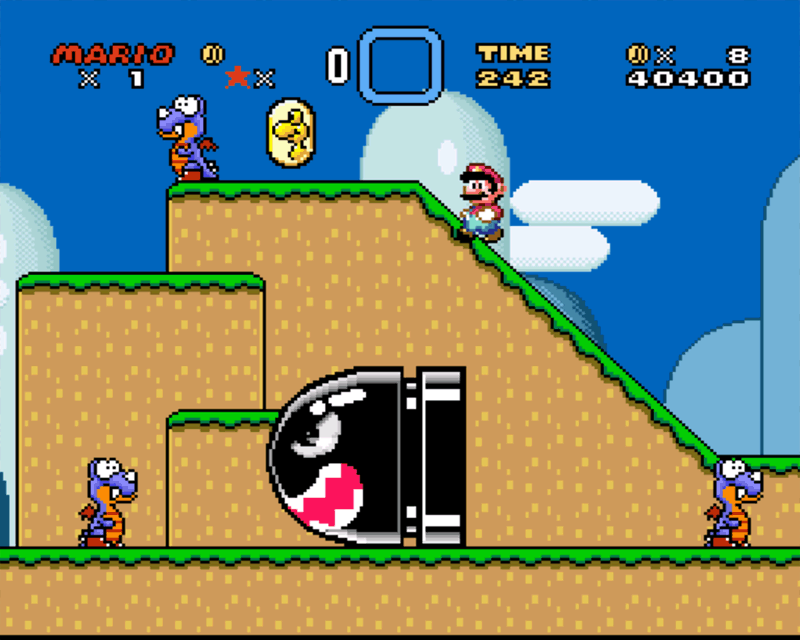Super Mario World:
for its original Japanese release, is a 1990 platform video game developed and published by Nintendo as a pack-in launch title for the Super Nintendo Entertainment System (SNES) and is the fifth game in the Super Mario series. Development was handled by Nintendo Entertainment Analysis and Development, led by Shigeru Miyamoto, who directed the game along with Takashi Tezuka.
 The game centers on the quest of Mario and Luigi to save Dinosaur Land from Bowser, the series' antagonist. The two brothers must travel across seven worlds to restore order to Dinosaur Land. It built on the gameplay of previous Mario games by introducing new power-ups that augment character abilities, and established conventions that were carried over to future games in the series. Super Mario World marks the first appearance of Yoshi, Mario's dinosaur sidekick and riding mount.
The game centers on the quest of Mario and Luigi to save Dinosaur Land from Bowser, the series' antagonist. The two brothers must travel across seven worlds to restore order to Dinosaur Land. It built on the gameplay of previous Mario games by introducing new power-ups that augment character abilities, and established conventions that were carried over to future games in the series. Super Mario World marks the first appearance of Yoshi, Mario's dinosaur sidekick and riding mount.
Super Mario World was an overwhelming critical and commercial success, selling over 20 million copies worldwide, and is considered by many to be one of the best and most innovative Mario games made. It has been re-released four times, first as part of a combo with Super Mario All-Stars on the SNES in 1994. Secondly, it was released on the Game Boy Advance as Super Mario Advance 2 (スーパーマリオアドバンス2 Sūpā Mario Adobansu Tsū?) in 2001 and outside of Japan as Super Mario Advance 2: Super Mario World in 2002 with modified gameplay. The third re-release was for the Wii's Virtual Console in Japan in 2006 and in North America and PAL regions in 2007; there were no changes from the original SNES version. It was also released for the Wii U's Virtual Console which integrated Off-TV Play and Miiverse features to the game.
Gameplay:
The new suit in the game is the cape feather, which gives Mario a cape and allows him to fly. This suit is also similar to the Racoon Suit from Super Mario Bros. 3 in terms of gameplay mechanics but with a few alterations: you can now hold the B button to fly when Mario is able to do so, and can glide using the cape as a sail. As in Super Mario Bros. 3, Mario can only fly for a limited amount of time, but with the cape can glide indefinitely.
The powerups from Super Mario Bros. 3 did not return: Super Leaf, Tanooki Suit, Frog Suit, and Hammer Suit. Super Mario World includes a multiplayer option which allows two players to cooperatively play the game by taking turns at navigating the overworld map and accessing stage levels; the first player controls Mario, while the other controls Luigi. The game introduces Yoshi, a dinosaur companion whom Mario can ride and who is able to eat most enemies.[4]
Although Mario and Luigi must generally navigate through seven worlds to reach the end of the game, the player can beat the game much faster by using the Star Road routes. In addition, there are a number of levels that have hidden exits, and as a result there exist several ways for Mario to navigate to Bowser's castle. Furthermore, the exploration of these secret stages lead to stages which while not necessary to the main plot, provide the gamer with more playing experience, such as Special World. Completion of Special World permanently alters some sprites and the overworld map's colour scheme


Post a Comment